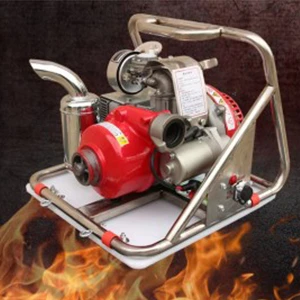

The application of fire fighting pumps extends beyond professional use into the realms of residential and agricultural protection. Homeowners in fire-prone areas utilize portable pumps as part of their defense strategy. By creating defensible space and using the pumps to wet down structures and vegetation, homeowners can significantly increase their property's resilience against advancing flames. In agricultural settings, these pumps provide essential protection for crops and livestock. With climate change increasing the frequency and intensity of fires in some regions, safeguarding valuable agricultural assets has become more important than ever. Deploying portable pumps allows for rapid response, minimizing potential losses and maintaining economic stability for farmers. The market offers a wide range of options, from renowned brands known for their reliability and longevity to emerging companies providing innovative features. Prospective buyers must consider factors such as warranty, durability, and customer support, all of which contribute to the pump's overall value and reliability. Consulting reviews and testimonials from experienced users can offer valuable insights, helping buyers make informed decisions based on real-world performance and reliability. In conclusion, portable fire fighting pumps are indispensable tools that combine engineering precision with practical application. Proper selection, regular maintenance, and strategic use of these pumps can significantly impact their effectiveness in combating fires. By understanding the intricate dynamics of flow rate, pressure, and power source, users can maximize their preparedness and protect what matters most. As environmental challenges evolve, having a trusted, reliable fire fighting tool becomes not just a tactical advantage but a necessity for safety and security. Whether for professional use or personal protection, portable fire fighting pumps offer peace of mind and security, proving their worth as a crucial component in fire management strategies.





























